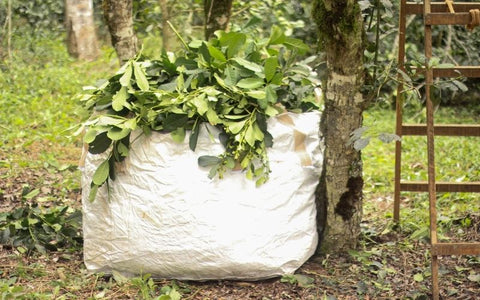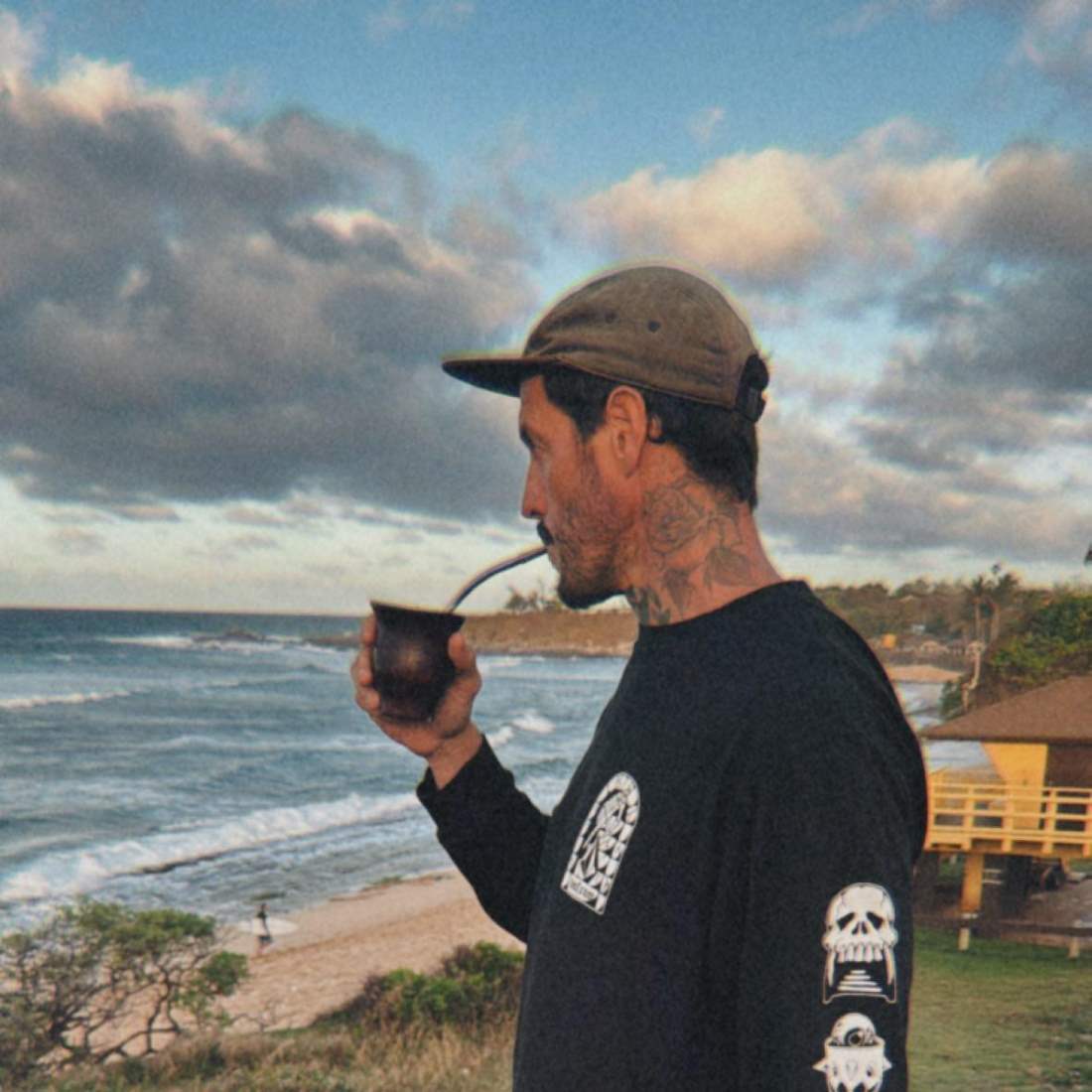Yerba Mate has been part of South American cultures for hundreds or perhaps thousands of years. This infusion, prepared from the leaves of yerba mate (Ilex paraguariensis), is consumed in a vast territory of the subcontinent. And if we take into account the enormity of South America, we will not be surprised to find that there are different ways of producing and consuming yerba mate. In this article, we will talk about two processes that result in two different types of yerba: smoked yerba mate and unsmoked yerba mate.
We will cover:
- What is the difference between smoked yerba mate and unsmoked yerba mate?
- Which of these two types of yerba mate is more popular?
- What is the production process of both yerba mates?
- Are there health risks from consuming smoked yerba mate?
- The environmental impact of each process?
Differences between smoked and unsmoked yerba mate
There are many ways to consume yerba mate. For example, two very different types are the yerba mate “with stems” (in Spanish, con palo, meaning that it includes thick leaves and less “dust”, and is consumed mostly in Argentina), and yerba mate “without stems” (in Spanish, despalada, which includes thinner leaves and is more widely consumed in Uruguay).
Although the brewing process is the same, the drinking process and flavor are different: yerba mate without stems is more intense, since the leaves are where the infusion’s flavor comes from.
However, this is not the only way to categorize yerba mate: we can also do it based on its production process. In this case, we can talk about smoked yerba mate and unsmoked yerba mate.
If we had to say what the main difference between smoked yerba mate and unsmoked yerba mate is, we would have to talk about the particular smoky taste of the first type. But how do we get there? We will explain this in more detail below.
Yerba mate elaboration process
The process of making yerba mate begins with the cultivation of the plant for 9 to 12 months inside a plant nursery until it is finally moved to the field. The main sites of cultivation of yerba mate are the provinces of Corrientes and Misiones, in northeastern Argentina. Actually, in this area it is possible to visit the Yerba Mate Route: a tour carried out by nonprofit ARYM (Yerba Mate Route Association) to visit the most important plantations.

About four years after planting, the Ilex paraguariensis is ready to be harvested. The ideal months to harvest are the austral autumn and winter—that is, between April and September. This is because, at this point, the leaves are sufficiently mature.

Once harvested, the plant needs to go through a heating process to decrease the humidity of its leaves and help all of its flavor-affecting aromas off. This process is known as Secado (drying in Spanish) and it is precisely at this point when it will be decided for the yerba to be smoked or unsmoked.
There is also Sapeco which is the Guarani word for ‘Opening the Eye’. It's the process of rapidly passing leaves over a flame to remove excess water and gases, the leaves literally crackle when doing this. The Sapeco comes before the drying, but there are great variations between the industrial and craft ones.
If the producers decide to make smoked yerba mate, the result is a type of yerba known as Barbacuá; this is a word in Guarani that means “smoked” or “toasted”.

The temperature of the secado used in this process varies between 60 and 70 degrees Celsius (between 140 and 160 degrees Fahrenheit). In addition, the time of the secado for this process is longer than in the unsmoked yerba mate production: depending on each producer, it can take from 12 hours up to three days.
The renowned yerba mate brand La Merced is dedicated to the production of Barbacuá yerba mate. It’s a product that is dried in an artisanal way, with a slow fire, and has a natural storage of close to one year. This gives it its characteristic robust and smoky flavor, with a high bitterness.

The truck above is carrying over 6000kg of mate leaves from the forests in Parana.
Health problems linked to smoked yerba mate?
Some research has raised alarm about possible adverse health effects linked to the consumption of smoked yerba mate. These studies refer to the fact that the secado, the drying process of yerba mate, occurs from the intentional burning of wood, which can produce chemical substances called “polycyclic aromatic hydrocarbons” or PAHs.
PAHs are fat-soluble substances that create from the incomplete combustion of products such as coal, wood, garbage, gas, or other organic substances, and are often found in soils or sediments. The Agency for Toxic Substances and Disease Registry (ATSDR) of the United States has also stated that burning wood is one of the ways in which PAHs enter the environment.
If we take into account that the secado process that gives the smoked yerba mate its particular taste happens from the burning of wood, it’s possible to assume that these chemical substances sneak into the final product. Here is a study that tested for the existence of PAHs in yerba mate with the following result: "Although, the eight PAHs studied were identified and quantified in most of the samples, the content of BaP, the most harmful PAH, did not exceed the maximum level suggested by the World Health Organization for drinking water (700 ng / L) in any of the infusions studied." Study results on the existence of PAHs in Yerba Mate (Scroll down in the article for English) .
In addition, some studies have found a relationship between esophageal cancer and mate consumption. However, a few years ago, a report by the International Agency for Research on Cancer (IARC), dependent on the World Health Organization (WHO), found that the high temperatures at which the infusion is consumed could be a cause, but not the components of the plant.
According to the organization, drinking any type of drink or infusion above 65°C (149°F) can cause an irritation in the esophagus. This can result in chronic inflammation of the tissue, which increases the risk of cancer mutations. Note that the IARC has not found any link between cancer and drinking mate with cold or warm water.
Read: What’s the Best Water Temperature for Yerba Mate?
For its part, the National Institute of Yerba Mate (INYM, for its acronym in Spanish), a state agency that promotes the production of yerba mate in Argentina, considers that the consumption of this infusion has a powerful antioxidant capacity because of the concentration of polyphenols, chemical substances found in plants. These substances prevent cardiovascular diseases thanks to the fact that they improve the body’s natural defenses. The INYM also points out that the consumption of mate helps control body weight, protects against neurodegenerative diseases and prevents the onset of diseases of inflammatory origin, such as cancer and type II diabetes.
Effects on the planet
A problem related to the smoke-drying of yerba mate is related to the effects on the environment. As wood is constantly needed for the combustion required by the smoking process, this means greater deforestation of South American forests. The Gran Chaco, an area comprising parts of Argentina, Bolivia, Brazil and Paraguay from where firewood is extracted for the manufacture of yerba mate, has suffered significant deforestation from the 1980s to the present although much as a result of several other purposes such as production of other vegetables of farming and not directly only yerba mate.
It’s not all bad news: The UN acknowledges that the world is bringing its efforts to reduce deforestation, and the numbers have fallen in recent years. In strict relation to the deforestation for the production of smoked yerba mate, the National Institute of Agricultural Technology (INTA, for its acronym in Spanish) of Argentina proposed the reforestation of forests with wood destined exclusively to function as combustion of the drying in this process.
Conclusion
Many yerba mate drinkers might be concerned about studies linking smoked yerba mate to health problems. However, although there is some research that refers to substances in the combustion of certain gasses, these are hypotheses. If you have doubt, you can drink certified organic yerba mate which is air dried, to remove the variable of smoked yerba mate from the equation. We highly suggest Anna Park Organic Yerba Mate as a great option.


